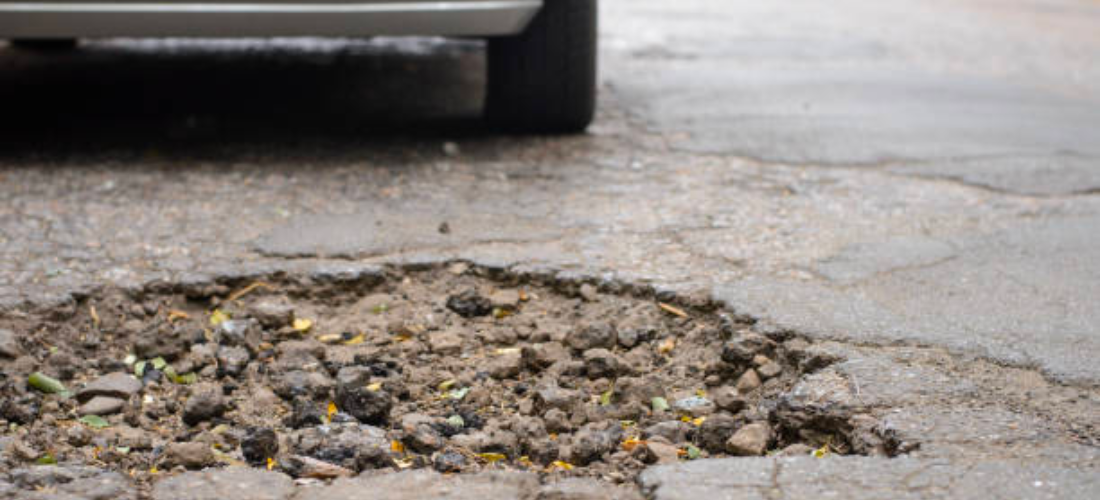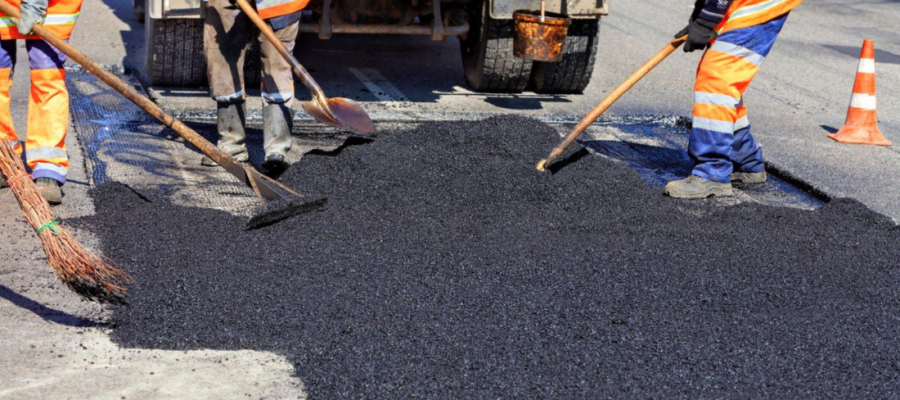
Potholes:
A pothole is a hole in the parking lot or road surface caused by water seeping through cracks and resting beneath it. This water grows the gap when it freezes and thaws, until there is nothing left to sustain the weight of automobiles moving overhead. This can result in potholes on both large and small roadways, even asphalt parking lots!
How to detect potholes?
The easiest approach to keep your pavement in good condition is to repair potholes as soon as they appear. As per pothole repair material suppliers, Potholes form as a result of temperature variations, such as severe heat or the freezing and thawing of water in pavement cracks. Potholes should be avoided, especially after large storms, although they can also build gradually over time by using good quality materials from trusted pothole repair material suppliers.
Here’s how to notice a pothole early on so you can fill it before it becomes more than a little dip in the pavement:
- Watch puddles and Low areas
Puddles help you spot future pavement repair needs. Puddles represent low regions where water gathers instead of draining. Circular puddles are more likely to develop potholes than wide, angular spaces.
- Check for circular patterns
When it’s dry, inspect your property’s pavement and roadways. Check the asphalt for brighter or darker circles. Potholes are circles and ovals that develop deeper and sharper over time.
- Clusters
Drivers, bicyclists, and pedestrians can generate pothole clusters. Potholes are puddles or divots on the pavement.
POTHOLE REPAIR TIPS
How do you fix potholes? There’s a tried-and-true way to fix potholes recommended by pothole repair material suppliers, whether you hire a specialist or do it yourself.
- Pothole Cleaning:
Before repairing a pothole, clear it out. First, clean out the hole using a shovel and gloves. Next, clean the bottom and edges to leave a neat edge.
- Rough edge
Most potholes have jagged edges. Cut down the pothole’s points with a diamond-edged saw. This prepares for mending and makes potholes safer while waiting to install asphalt.
- Repair Deep holes
If the pothole is deep, you may need to fill it with fine gravel or paver filler to form a solid underlayer. You can also remove some asphalt at this point. Then, tamp the new substrate every two inches to keep it firm.
- Seal spider cracks
If holes are cracking, fill them. Pothole repair material suppliers recommend using moldable putty and a blowtorch to melt the new binding agent in pothole cracks. After it hardens, fix cracks with paver filler.
- Top, Level and Patch
Fill the pothole with new asphalt patching. Tamp it using a tamping instrument, vehicle roller, or flat, heavy implement. Top, level, and tamp the patched asphalt until it’s flush with the road.
- Cure and reseal asphalt
You should perform a few things after pothole asphalt repair to prevent cracking or pitting. Choose the best sealant provided by pothole repair material suppliers for asphalt pothole repair and apply it within 24 hours.
The sealant dries in 30 to 60 minutes, depending on weather. Once the pothole asphalt repair is cured, you may pave over it to prevent future potholes.
Seal coating inhibits future moisture seepage into pavement. Parking lots and paths must be resealed every five years or after pothole repairs.
- September 24, 2022
- By: admin
- Category:Uncategorized
- no comments
Related Posts

- April 11, 2024
- By: admin
- in: Uncategorized



